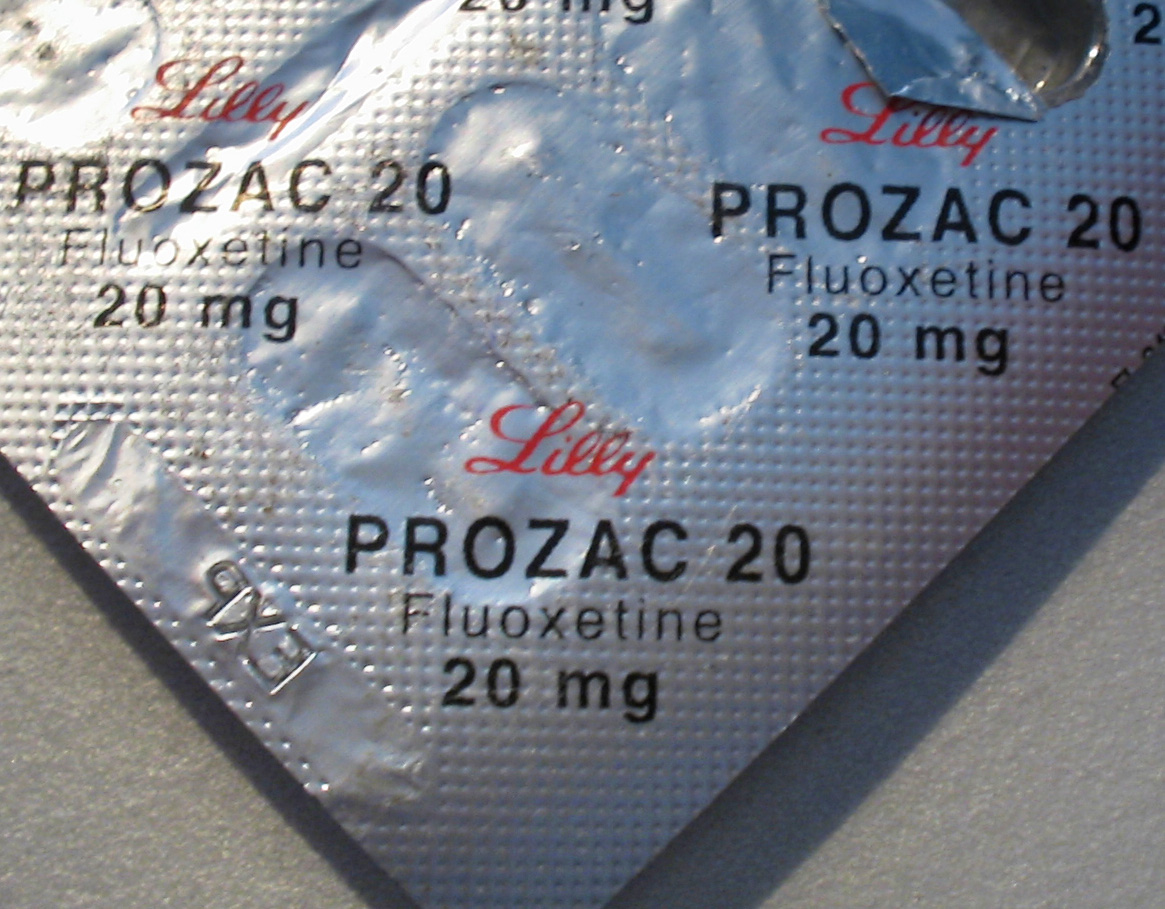|
Ariadne (drug)
Ariadne, also known chemically as 4C-D or 4C-DOM, by its developmental code name BL-3912, and by its former tentative brand name Dimoxamine, is a little-known psychoactive drug of the phenethylamine, phenylisobutylamine, and 4C families. It is a homologue of the psychedelics 2C-D and DOM. The drug is a serotonin receptor agonist, including of the serotonin 5-HT2A receptor. However, it is non-hallucinogenic in animals and humans, although it still has some psychoactive effects. It may be non-hallucinogenic due to lower- efficacy partial agonism of the serotonin 5-HT2A receptor. Ariadne was developed by Alexander Shulgin. It was studied at Bristol Laboratories as an antidepressant and for various other uses but was never marketed. There has been renewed interest in Ariadne in the 2020s owing to increased interest in psychedelics for treatment of psychiatric disorders. Effects In his 1991 book '' PiHKAL'', Alexander Shulgin reported testing Ariadne on himself up to a dose o ... [...More Info...] [...Related Items...] OR: [Wikipedia] [Google] [Baidu] |
Serotonin
Serotonin () or 5-hydroxytryptamine (5-HT) is a monoamine neurotransmitter. Its biological function is complex and multifaceted, modulating mood, cognition, reward, learning, memory, and numerous physiological processes such as vomiting and vasoconstriction. Approximately 90% of the serotonin that the body produces is in the intestinal tract. Biochemically, the indoleamine molecule derives from the amino acid tryptophan, via the (rate-limiting) Tryptophan hydroxylase, hydroxylation of the 5 position on the ring (forming the intermediate 5-Hydroxytryptophan, 5-hydroxytryptophan), and then Aromatic L-amino acid decarboxylase, decarboxylation to produce serotonin. Serotonin is primarily found in the enteric nervous system located in the human gastrointestinal tract, gastrointestinal tract (GI tract). However, it is also produced in the central nervous system (CNS), specifically in the raphe nuclei located in the brainstem, Merkel cells located in the skin, Neuroendocrine cell#Pulmo ... [...More Info...] [...Related Items...] OR: [Wikipedia] [Google] [Baidu] |
2C-D
2C-D (2,5-dimethoxy-4-methylphenethylamine or 2C-M) is a psychedelic drug of the 2C family that is sometimes used as an entheogen. It was first synthesized in 1970 by a team from the Texas Research Institute of Mental Sciences, and its activity was subsequently investigated in humans by Alexander Shulgin. In his book '' PiHKAL'', Shulgin lists the dosage range as being from 20 to 60 mg. Lower doses of 10 mg or less have been explored for microdosing. Not much information is known about the toxicity of 2C-D, as no major studies have been conducted. According to Shulgin, the effects of 2C-D typically last for 4–6 hours. Shulgin himself referred to this substance as a “pharmacological tofu,” meaning that when mixed with other substances, it can extend or potentiate their effects without coloring the experience too much, in a manner similar to how tofu absorbs the flavors of sauces or spices it is cooked with. Hanscarl Leuner, working in Germany, explored the use of 2C-D un ... [...More Info...] [...Related Items...] OR: [Wikipedia] [Google] [Baidu] |
Well-being
Well-being, or wellbeing, also known as wellness, prudential value or quality of life, refers to what is intrinsically valuable relative ''to'' someone. So the well-being of a person is what is ultimately good ''for'' this person, what is in the self-interest of this person. Well-being can refer to both positive and negative well-being. In its positive sense, it is sometimes contrasted with ill-being as its opposite. The term "subjective well-being" denotes how people experience and evaluate their lives, usually measured in relation to self-reported well-being obtained through questionnaires. Overview Sometimes different types of well-being are distinguished, such as mental well-being, physical well-being, economic well-being or emotional well-being. The different forms of well-being are often closely interlinked. For example, improved physical well-being (e.g., by reducing or ceasing an addiction) is associated with improved emotional well-being. As for another example, better ... [...More Info...] [...Related Items...] OR: [Wikipedia] [Google] [Baidu] |
Alertness
Alertness is the state of active attention by high sensory awareness such as being watchful and prompt to meet danger or emergency, or being quick to perceive and act. It is related for psychology . A lack of alertness is a symptom of a number of conditions, including narcolepsy, attention deficit disorder, chronic fatigue syndrome, depression, Addison's disease, or sleep deprivation. Pronounced lack of alertness can be graded as an altered level of consciousness. The word is formed from "alert", which comes from the Italian "all'erta" (on the watch, literally, on the height; 1618) Physiological aspects People who have to be alert during their jobs, such as air traffic controllers or pilots, often face challenges maintaining their alertness. Research shows that for people "...engaged in attention-intensive and monotonous tasks, retaining a constant level of alertness is rare if not impossible." If people employed in safety-related or transportation jobs have lapses in ... [...More Info...] [...Related Items...] OR: [Wikipedia] [Google] [Baidu] |
Hallucination
A hallucination is a perception in the absence of an external stimulus that has the qualities of a real perception. Hallucinations are vivid, substantial, and are perceived to be located in external objective space. Hallucination is a combination of 2 conscious states of brain wakefulness and REM sleep. They are distinguishable from several related phenomena, such as dreaming ( REM sleep), which does not involve wakefulness; pseudohallucination, which does not mimic real perception, and is accurately perceived as unreal; illusion, which involves distorted or misinterpreted real perception; and mental imagery, which does not mimic real perception, and is under voluntary control. Hallucinations also differ from " delusional perceptions", in which a correctly sensed and interpreted stimulus (i.e., a real perception) is given some additional significance. Many hallucinations happen also during sleep paralyses. Hallucinations can occur in any sensory modality—visual, audito ... [...More Info...] [...Related Items...] OR: [Wikipedia] [Google] [Baidu] |
Psychiatric Disorder
A mental disorder, also referred to as a mental illness or psychiatric disorder, is a behavioral or mental pattern that causes significant distress or impairment of personal functioning. Such features may be persistent, relapsing and remitting, or occur as single episodes. Many disorders have been described, with signs and symptoms that vary widely between specific disorders. Such disorders may be diagnosed by a mental health professional, usually a clinical psychologist or psychiatrist. The causes of mental disorders are often unclear. Theories may incorporate findings from a range of fields. Mental disorders are usually defined by a combination of how a person behaves, feels, perceives, or thinks. This may be associated with particular regions or functions of the brain, often in a social context. A mental disorder is one aspect of mental health. Cultural and religious beliefs, as well as social norms, should be taken into account when making a diagnosis. Services are b ... [...More Info...] [...Related Items...] OR: [Wikipedia] [Google] [Baidu] |
Antidepressant
Antidepressants are a class of medication used to treat major depressive disorder, anxiety disorders, chronic pain conditions, and to help manage addictions. Common side-effects of antidepressants include dry mouth, weight gain, dizziness, headaches, sexual dysfunction, and emotional blunting. There is a slight increased risk of suicidal thinking and behavior when taken by children, adolescents, and young adults. Discontinuation syndrome may occur after stopping any antidepressant which resembles recurrent depression. Some research regarding the effectiveness of antidepressants for depression in adults has found benefits, whilst other research has not. Evidence of benefit in children and adolescents is unclear. The twenty-one most commonly prescribed antidepressant medications are more effective than placebo for the short-term (acute) treatments of adults with major depressive disorder. There is debate in the medical community about how much of the observed effects of ... [...More Info...] [...Related Items...] OR: [Wikipedia] [Google] [Baidu] |
Bristol Laboratories
The Bristol Myers Squibb Company (BMS) is an American multinational pharmaceutical company. Headquartered in New York City, BMS is one of the world's largest pharmaceutical companies and consistently ranks on the ''Fortune'' 500 list of the largest U.S. corporations. For fiscal 2021, it had a total revenue of $46.4 billion. Bristol Myers Squibb manufactures prescription pharmaceuticals and biologics in several therapeutic areas, including cancer, HIV/AIDS, cardiovascular disease, diabetes, hepatitis, rheumatoid arthritis, and psychiatric disorders. BMS's primary research and development (R&D) sites are located in Lawrence, New Jersey (formerly Squibb, near Princeton), Summit, New Jersey, formerly HQ of Celgene, New Brunswick, New Jersey, Redwood City, California, and Seville in Spain, with other sites in Devens and Cambridge, Massachusetts, East Syracuse, New York, Braine-l'Alleud, Belgium, Tokyo, Japan, Bangalore, India, and Wirral, United Kingdom. BMS previously had an ... [...More Info...] [...Related Items...] OR: [Wikipedia] [Google] [Baidu] |
Alexander Shulgin
Alexander Theodore "Sasha" Shulgin (June 17, 1925 – June 2, 2014) was an American medicinal chemist, biochemist, organic chemist, pharmacologist, psychopharmacologist, and author. He is credited with introducing 3,4-methylenedioxymethamphetamine (MDMA, commonly known as "ecstasy") to psychologists in the late 1970s for psychopharmaceutical use and for the discovery, synthesis and personal bioassay of over 230 psychoactive compounds for their psychedelic and entactogenic potential. In 1991 and 1997, he and his wife Ann Shulgin compiled the books '' PiHKAL'' and '' TiHKAL'' (standing for ''Phenethylamines'' and ''Tryptamines I Have Known And Loved''), from notebooks that extensively described their work and personal experiences with these two classes of psychoactive drugs. Shulgin performed seminal work into the descriptive synthesis of many of these compounds. Some of Shulgin's noteworthy discoveries include compounds of the 2C* family (such as 2C-B) and compounds o ... [...More Info...] [...Related Items...] OR: [Wikipedia] [Google] [Baidu] |
Partial Agonism
In pharmacology, partial agonists are drugs that bind to and activate a given receptor, but have only partial efficacy at the receptor relative to a full agonist. They may also be considered ligands which display both agonistic and antagonistic effects—when both a full agonist and partial agonist are present, the partial agonist actually acts as a competitive antagonist , competing with the full agonist for receptor occupancy and producing a net decrease in the receptor activation observed with the full agonist alone. Clinically, partial agonists can be used to activate receptors to give a desired submaximal response when inadequate amounts of the endogenous ligand are present, or they can reduce the overstimulation of receptors when excess amounts of the endogenous ligand are present. Some currently common drugs that have been classed as partial agonists at particular receptors include buspirone, aripiprazole, buprenorphine, nalmefene and norclozapine. Examples of ligands ac ... [...More Info...] [...Related Items...] OR: [Wikipedia] [Google] [Baidu] |
Intrinsic Activity
Intrinsic activity (IA) and efficacy refer to the relative ability of a drug- receptor complex to produce a maximum functional response. This must be distinguished from the affinity, which is a measure of the ability of the drug to bind to its molecular target, and the EC50, which is a measure of the potency of the drug and which is proportional to both efficacy and affinity. This use of the word "efficacy" was introduced by Stephenson (1956) to describe the way in which agonists vary in the response they produce, even when they occupy the same number of receptors. High efficacy agonists can produce the maximal response of the receptor system while occupying a relatively low proportion of the receptors in that system. There is a distinction between efficacy and intrinsic activity. Mechanism of efficacy Agonists of lower efficacy are not as efficient at producing a response from the drug-bound receptor, by stabilizing the active form of the drug-bound receptor. Therefore, they m ... [...More Info...] [...Related Items...] OR: [Wikipedia] [Google] [Baidu] |





.jpg)
